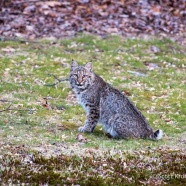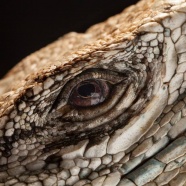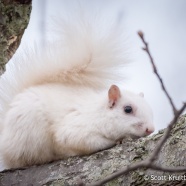Spring Salamander
Hey look – a hot-dog with eyes! Wait, that’s a Spring Salamander (Gyrinophilus porphyriticus)! This large, lung-less salamander is a common resident in the many springs and streams that run through our local forests. It’s stature and bright coloration make it stand out, but also serve as protection from predators. Spring salamanders can grow to over eight inches in length and produce noxious skin secretions while using their color to mimic even more toxic species. It isn’t a salamander any predator would want to mess with, and it probably wouldn’t taste anything...
Read MoreBobcat
They say any evening you spend with a Bobcat is a good evening – okay, maybe they don’t, but I did, and I do, so here’s a photo of a Bobcat that I took about an hour ago after sunset. What a magnificent creature! We will be buried in snow tomorrow in Connecticut, and I hope it comes back to play then. Scott Kruitbosch Conservation & Outreach Coordinator
Read MoreMale Black Spiny-tailed Iguana (Ctenosaura similis)
Birds are not the only creatures that RTPI Affiliate Sean Graesser was wrangling during his research trip to Costa Rica. With some help from Addison Keilty, here is a photo of a dinosaur – er, rather, a monster male Black Spiny-tailed Iguana (Ctenosaura similis).
Read MoreWhite Squirrel
One of the most familiar backyard creatures we have in the eastern part of the United States is the Eastern Gray Squirrel (Sciurus carolinensis). They are on our trees, robbing our bird feeders, “begging” for a snack in the park, but they are not always all the same. Some areas have local populations of melanistic, leucistic, or albino squirrels, and in some cases, these black or white appearances seem to possibly even be a color morph. I photographed this squirrel last week, and its dark (not red) eyes suggest it is not an albino even though it looked so very white. Such a...
Read More#FrogFriday
The frogs are eager to meet a lot of 3rd graders at Lincoln Elementary School next #FrogFriday! Local students will get a little taste of RTPI’s tropical research, just before our next field season kicks off. Stay tuned for more updates.
Read More








